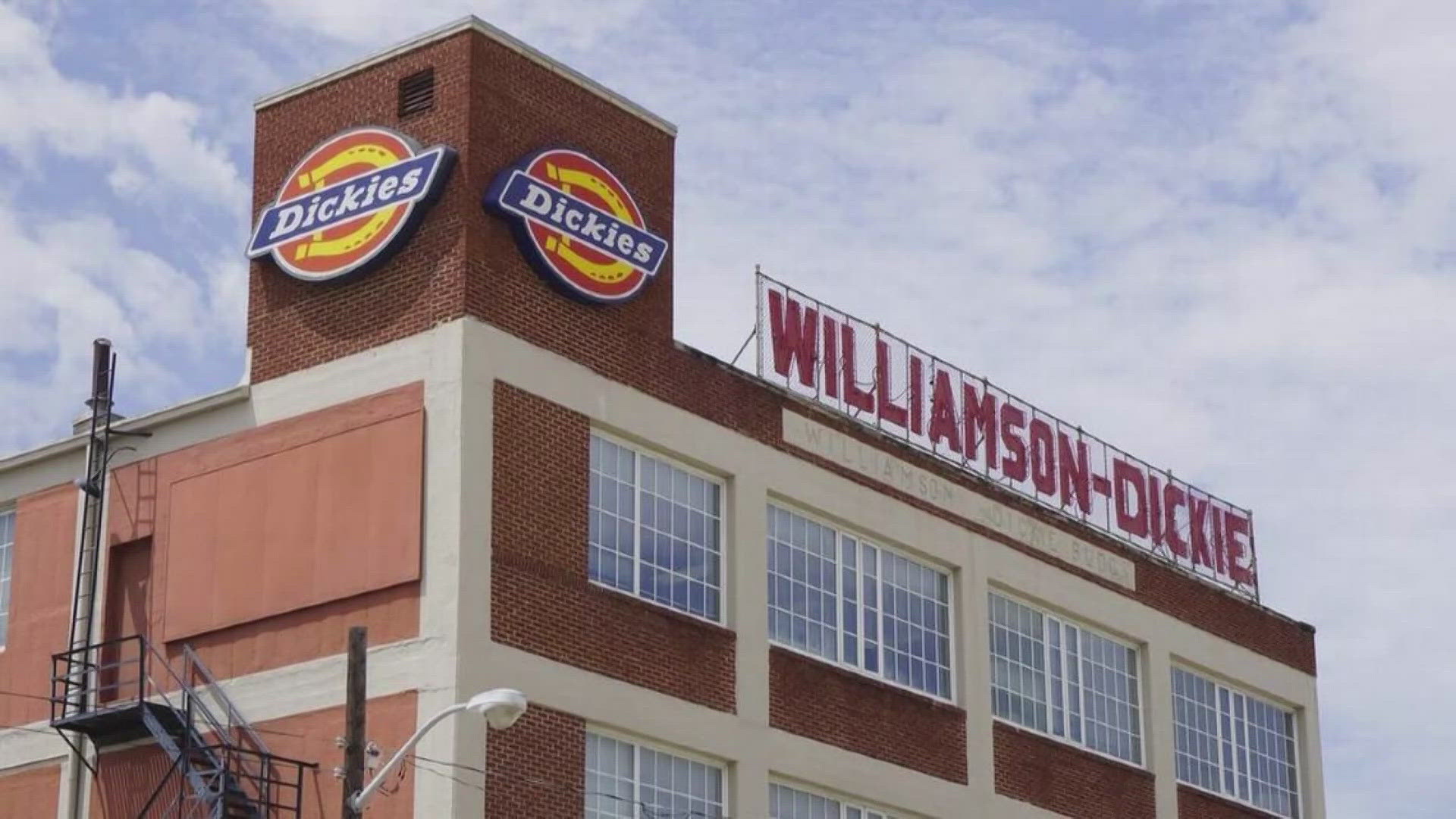DALLAS — Editor's note: This story originally appeared in the Dallas Business Journal. This is part of a Dallas Business Journal project examining the aging housing stock in North Texas and the implications for economic development, quality of life, social equity and other aspects. To read more articles in the series, click here.
On the plus side, the average teacher who rents in Dallas-Fort Worth spends just 18% of their income on rent, which is less than the common 30% rule-of-thumb maximum for affordable housing.
On the minus side, the rentals available for teachers to keep their housing burden that low are an average of 24 years older than the typical rental available on the D-FW market, according to a new study.
The situation is only slightly better for nurses in D-FW, who typically spend 17.6% of their income on rent. The rentals available to nurses at that spending level run 10 years older, on average, than the typical rental in the North Texas market.
In addition to teachers and nurses, D-FW renters who work in law enforcement, construction, manufacturing, food service, retail and a handful of other essential fields find the rentals they can afford are more than 25 years older than the typical rental in the market, according to a new Zillow analysis.
D-FW is not unique in its lack of affordable housing options for renters in some of society’s most essential occupations. Zillow’s research shows that many renters nationwide with in-person jobs — those that can’t be done from home — are battling over a small slice of the rental market made up of older, smaller apartments, houses, duplexes and the like.
Cory Hopkins, senior managing editor of Zillow’s economic research team, called the findings a “yeah, but” situation.
“Teachers, nurses, retail workers and other essential workers are keeping their housing cost burdens low, which is a good thing, but to do so, they are making a lot of tradeoffs,” Hopkins said. “They're trading off to either smaller units, older units, or maybe a lot more roommates.
"These are the ways they're finding to keep the rent burden low to be able to have enough money left over to pay other bills.”
Russ Robinson, an experienced eighth-grade U.S. History teacher, spends far above the 18% norm in his profession for his rental.
Robinson said he pays roughly 40% of his gross income for the 44-year-old, single-family home he rents on Chalk Court in Plano where he lives with his son and hosts the occasional poker party. His rent works out to 48% of his take-home pay.
Robinson needed the space in the four-bedroom, two-bath house based on his family’s size when he moved in several years back, but now he’s considering downsizing.
Last year, he looked around at houses for sale and at houses and apartments for rent. The problem he found was that house and apartment rents have escalated so much in the past couple of years that moving wouldn’t save him much money, if any, he said.
Robinson said he’s not bothered by the age of his rental, which was built in 1977. The median age of single-family homes in Collin County is 24 years old, according to the U.S. Census Bureau’s most recent American Community Survey, conducted in 2019. The median home age in Dallas County is 44 years. In Tarrant County, the median home is 38 years old, and in Denton County, it’s 29 years old, the ACS statistics show.
“It's crazy in Plano, or it was when I looked,” Robinson said. “I don't think it has calmed down in the buying market or the rental market.”
Robinson would like to buy a house, but for now, that’s not in the cards.
“Right now, on a teacher salary and one income, it's not going to be something that's going to happen anytime soon,” he said. “Especially with the price of the rent I'm paying, there's certainly not much money left to put away for a down payment or anything."
Although the age of a rental doesn’t tell the whole story, living in older residential structures increases the likelihood of living in unsafe or unhealthy conditions as well as downgrading renters’ quality of life, according to another Zillow analysis and other empirical studies
“If all the burners on the stove work, if the laundry facility isn't out of order, if all the maintenance has been done and those kinds of things, an older housing unit can be a very productive housing unit and put a decent roof over your head,” Hopkins said. “Increasingly, though, that’s a big if.”
“We've done research that shows that health outcomes in older units tend to be worse,” he added. “Maybe because of deferred maintenance, maybe there's lead paint in the basement or leaky pipes and maybe there’s some mold. Those sorts of things are increasingly common in older units versus newer units.”
In addition to being older, the rentals that are affordable to teachers and others in the occupations Zillow identified are typically smaller, Hopkins said. The pool of rentals on the market that workers in those fields can afford is also greatly reduced, he said.
“In Dallas, the typical teacher can actually only afford about 13% of rentals without increasing their rent burden beyond that 18%,” he said. “Those 13% of rentals are typically almost 200 square feet smaller. So 200 square feet is about 10 by 20 feet, or about the size of a decent bedroom. That means a one-bedroom instead of a two-bedroom or maybe even a studio instead of a one.”



